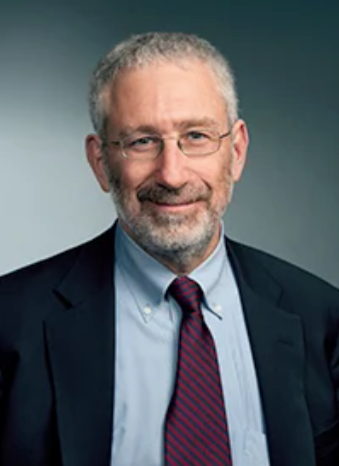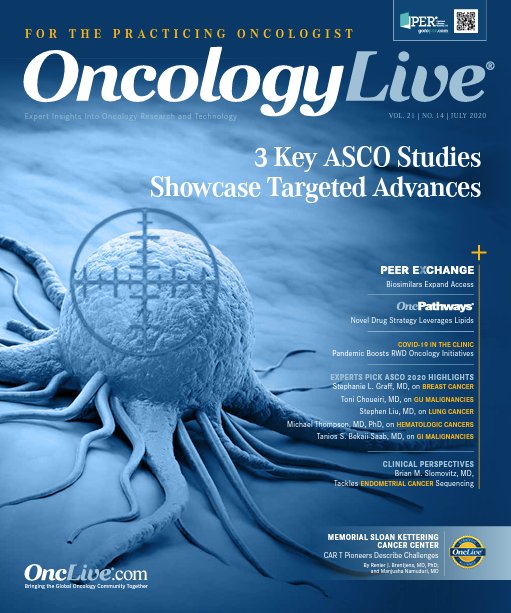Publication
Article
Public Mistrust May Undermine HPV and COVID-19 Vaccines
Author(s):
These are disquieting times for clear and decisive messaging regarding vaccines.
Maurie Markman, MD

This should be a time of celebration in the realm of cancer prevention. The FDA recently approved the use of a 9-valent recombinant vaccine for the prevention of oropharyngeal and other head and neck cancers caused by human papillomavirus (HPV) types 16, 18, 31, 33, 45, 52, and 58. This vaccine has previously been approved for delivery in females aged 9 to 45 years to prevent cervical, vulvar, vaginal, and anal cancers caused by HPV, as well as precancerous or dysplastic lesions caused by certain HPV types. Further, the vaccine has been approved for males aged 9 to 45 years to prevent anal cancer and anal intraepithelial neoplasia.1
This critically important development recognizes the remarkably impressive data demonstrating the value of HPV vaccination of both females and males in the prevention of malignant disease. The future impact of the standard-of-care administration of this remarkably safe and effective cancer prevention vaccine cannot be overstated.
In a 2016 report, the Centers for Disease Control and Prevention noted an average of almost 39,000 HPV-associated cancers occurred in the United States each year from 2008 to 2012 (approximately 23,000 in women and 16,000 in men), with 80% of these cancers directly attributable to HPV infection.2 Worldwide, there are approximately 600,000 cases of HPV-related cancers, the incidence of which could be substantially reduced through an effective international HPV vaccination strategy.3
It should be further noted that although the incidence of cervical cancer has decreased over time due to effective population-based screening, the incidence of HPV-associated anal and oropharyngeal cancers has been increasing, and no effective screening strategies exist for these difficult malignances. Thus, prevention becomes even more critical and clinically relevant.4 Finally, it is important to realize that the association between HPV high-risk types (predominantly HPV-16) that are present in the 9-valent vaccine and noncervical cancers is even stronger than that found between HPV highrisk types and cervical cancer. For example, in the United States, 60% of oropharyngeal cancers are due to HPV infection and 90% of these infections are caused by HPV-16.5 Notably, even at this early point following the routine use of HPV vaccination, there is striking evidence of a reduction in the population-based prevalence of HPV-16 and HPV-18.6
Yet despite these impressive outcomes and favorable policy decisions, these are disquieting times for clear and decisive messaging regarding vaccines, including the HPV cancer prevention vaccination strategy.
Anti-Vaccination Influence Grows
It is increasingly evident that the anti-vaccination movement in the United States and worldwide is gaining strength and a larger audience. As noted in a recent highly provocative analysis of 3 billion Facebook users, investigators found that although overall there were more “followers” of pro-vaccination pages, the anti-vaccination pages were far greater in number.7 Further, and of perhaps greatest concern, the followers of the antivaccination pages appeared to have greater overlap with “undecided individuals” than the followers of the material provided by pro-vaccination groups. The investigators stated that their “theoretical framework reproduces the recent explosive growth in anti-vaccination views and predicts that these views will dominate in a decade.” This is indeed a stunningly scary conclusion.
As noted in a recent commentary, while the pro-vaccination groups highlight the straightforward argument that currently available standard-of-care vaccines are both safe and effective, anti-vaccination messages include issues unrelated to the objective benefits of this major public health advance such as concepts of personal freedom and multiple conspiracy theories.8
Against this backdrop, we turn to the current highly public debate regarding the development of a vaccine strategy for the coronavirus 2019 (COVID-19). The quite understandable urgency to find and implement an effective vaccine approach to prevent serious illness associated with this novel virus has led to an uncoordinated scientific, industry, and governmental response to this complex process. Claims that a safe and effective vaccine will be available at the end of this calendar year or early next year have been challenged by many who have extensive experience in the development of currently available childhood and adult vaccine products.
Appropriately noted was the example of the very rapid deployment of the Salk polio vaccine and the terrible production error in 1955 that resulted in 40,000 children developing polio directly and the start of another outbreak, causing 10 deaths and leading to permanent crippling in another 164 individuals.9
Further, in the rush to create commercial vaccines to immunize the public against COVID-19, there are reports that the populations most at risk of experiencing a serious outcome, the elderly and individuals with comorbid medical conditions, may either be excluded from some existing and planned clinical trials or underrepresented in the study populations.10 One must ask: What is the point of developing a vaccine that has not been demonstrated to be safe and effective in the group of patients most in need of protection?
And, what will happen if in this sprint to develop a COVID-19 vaccine, one or several products approved for routine commercial use are revealed to cause a small but clearly observable risk of serious adverse events that are unfortunately not recognized during the preclinical and clinical research phase, the time when such events should be recognized if they occur? What will happen to societal faith in science and those responsible for establishing public health policy?
If this distressing scenario becomes reality, what will happen to critical efforts to strongly encourage the well-established safe and effective vaccination for childhood and adult illnesses, including strategies to prevent thousands of HPV-related cancers? It does not take much thinking or imagination to know the answer to this disturbing question.
References
1. Gardasil 9. Prescribing information. Merck & Co, Inc; 2020. Accessed June 30, 2020. https://www.fda.gov/media/90064/download
2. Viens LJ, Henley J, Watson M, et al. Human papillomavirus-associated cancers―United States, 2008-2012. MMWR Morb Mortal Wkly Rep. 2016;65(26)661-666. doi:10.15585/mmwr.mm6526a1
3. Bansal A, Singh MP, Rai B. Human papillomavirus-associated cancers: a growing global problem. Int J Appl Basic Med Res. 2016;6(2):84-89. doi:10.4103/2229-516X.179027
4. Gillison ML, Chaturvedi AK, Lowy DR. HPV prophylactic vaccines and the potential prevention of noncervical cancers in both men and women. Cancer. 2008;113(suppl 10):3036-3046. doi:10.1002/cncr.23764
5. Bailey HH, Chuang LT, duPont NC, et al. American Society of Clinical Oncology statement: human papillomavirus vaccination for cancer prevention. J Clin Oncol. 2016;34(15):1803-1812. doi:10.1200/JCO.2016.67.2014
6. Drolet M, B.nard E, P.rez N, Brisson M; HPV Vaccination Impact Study Group. Population-level impact and herd effects following the introduction of human papillomavirus vaccination programmes: updated systematic review and meta-analysis. Lancet. 2019;394(10197):497-509. doi:10.1016/S0140-6736(19)30298-3
7. Johnson NF, Vel.squez N, Restrepo NJ, et al. The online competition between pro- and anti-vaccination views. Nature. 2020;582(7811):230-233. doi:10.1038/s41586-020-2281-1
8. Ball P. Anti-vaccine movement could undermine efforts to end coronavirus pandemic, researchers warn. Nature. 2020;581(7808):251. doi:10.1038/d41586-020-01423-4
9. Offit PA. The Cutter incident, 50 years later. N Engl J Med. 2005;352(14):1411-1412. doi:10.1056/NEJMp048180
10. Span P. Older adults may be left out of some Covid-19 trials. New York Times. June 23, 2020; D3.










